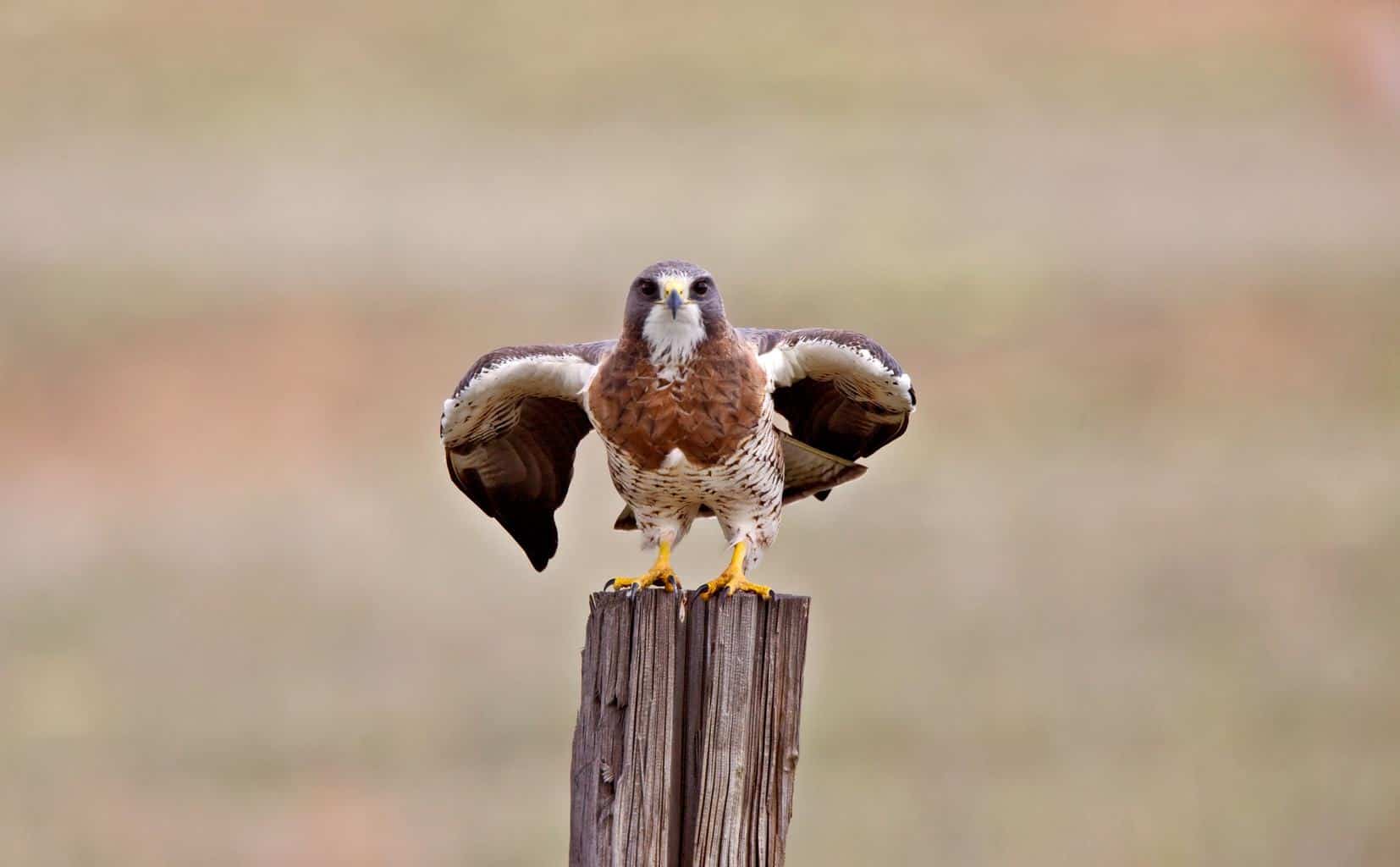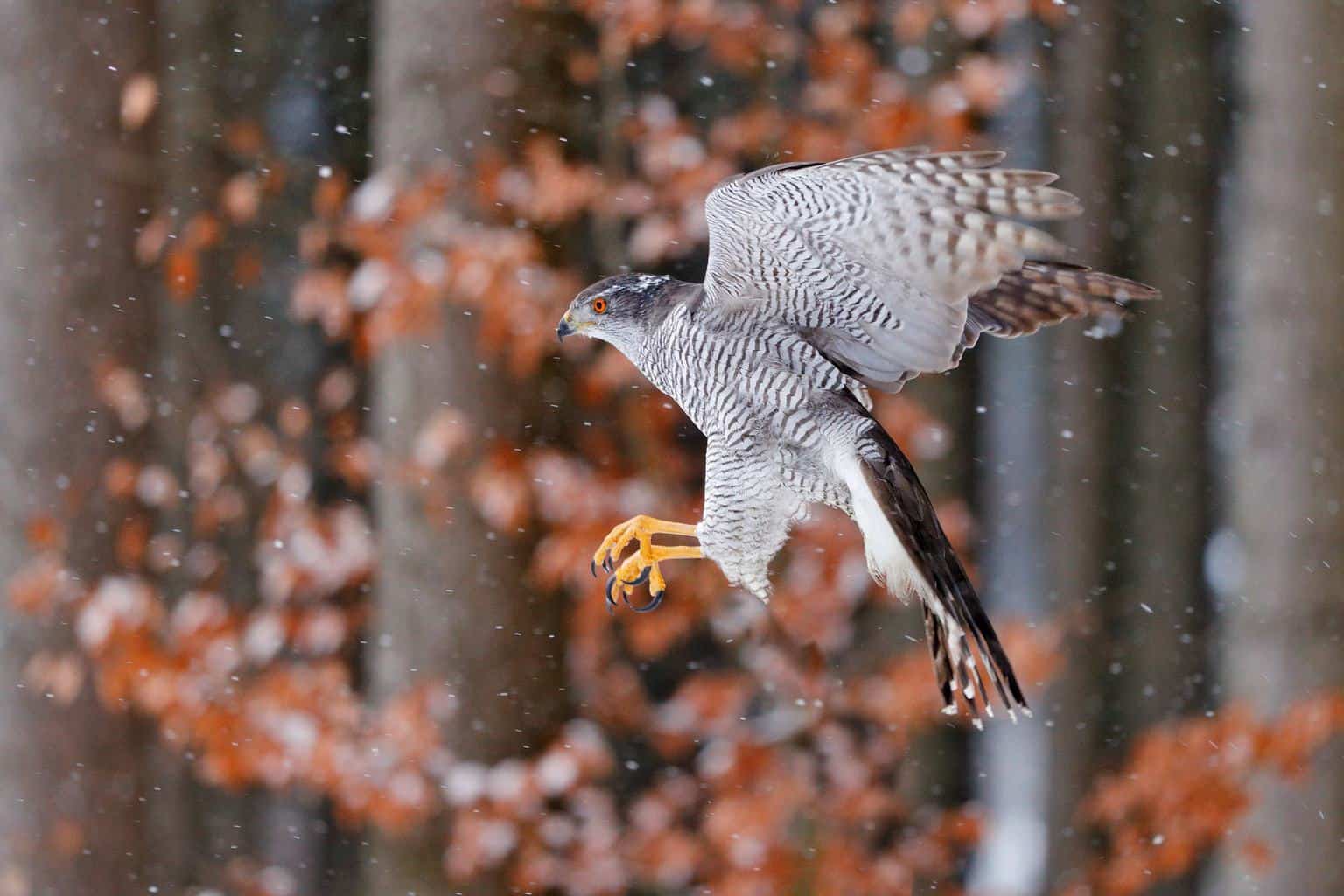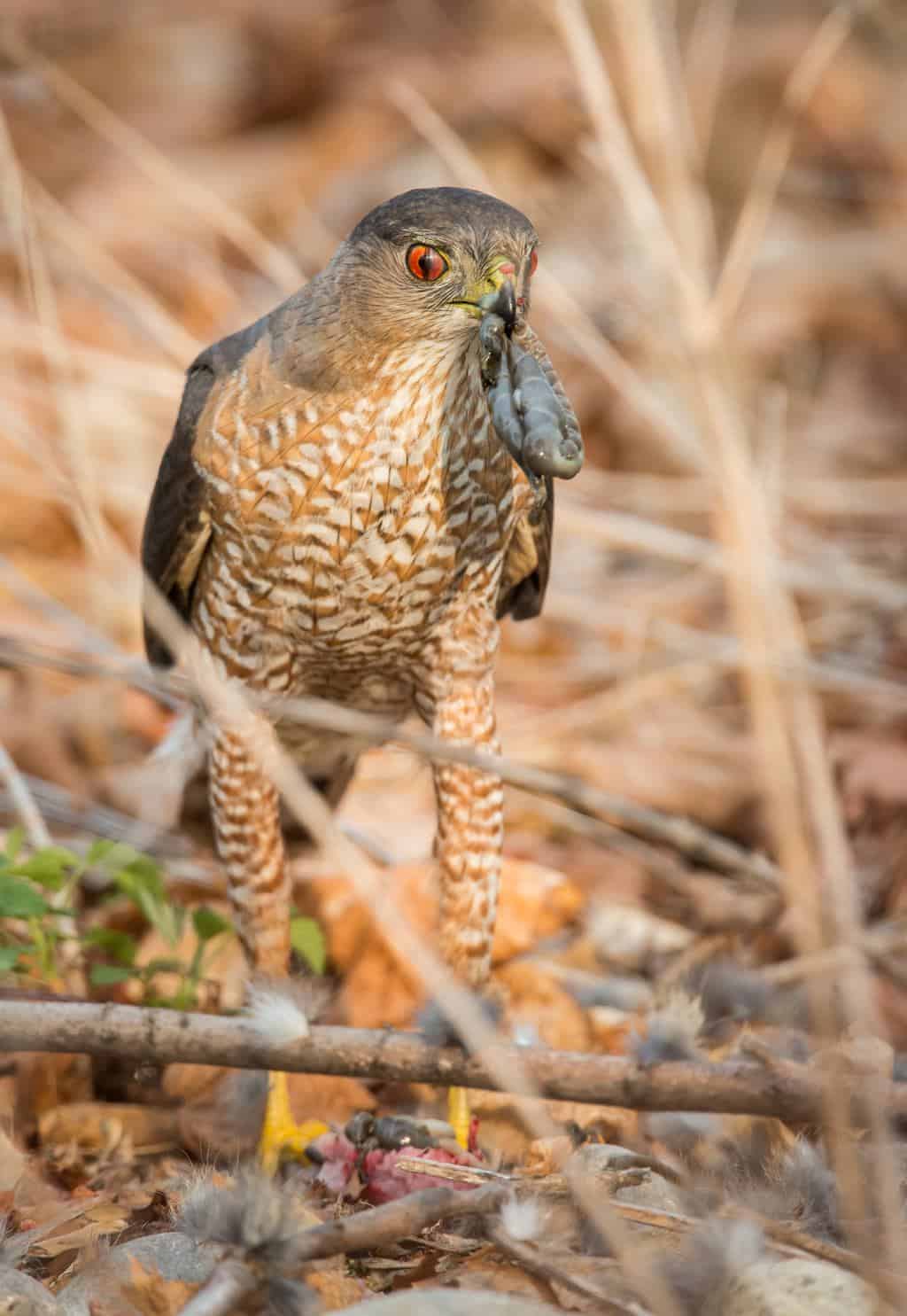Although Nevada is most famous for Las Vegas and its nightlife, there’s so much more to do in the state! You can take a selfie from the top of the great Hoover Dam, or enjoy a bonfire on the shores of Lake Tahoe. Feel like exploring? Plan a hiking trip to Black Mountain, or just drive around the roads of Nevada’s beautiful, wide-open landscape.
Better yet, what if you spent some time birdwatching? If you’re a fan of birds, particularly hawks, you’ll be happy to know that the arid Silver State is home to nine different hawks. Hawks are a predatory species with sharp eyesight that helps them see prey from a distance of up to 100 feet above. With its wide spaces and natural mountains, Nevada is an excellent hunting ground for hawks.
Let’s take a look at the most common hawk species found in the state.
Swainson’s Hawk

-
Scientific name: Buteo swainsoni
-
Length: 18.9-22.1 inches
-
Weight: 24.4-48.2 ounces
-
Wingspan: 48 inches
Swainson’s hawks are medium-sized buteo birds. Most buteos are large raptors. Raptors, or birds of prey, tend to hunt animals slightly larger than them in size. With this being said, note that Swainson’s hawk’s diet includes rabbits and gophers as well as a variety of insects, like crickets, locusts, and grasshoppers.
If you hope to attract a Swainson’s hawk, try leaving grasshoppers as bait in a grassy, open area. One will likely be on a tree nearby, but can also be found perched upon pylons or other high structures in populated areas, and it’ll probably swoop down and take the bait.
If you find yourself in Nevada during the winter and hope to see one of these birds, unfortunately, you’ll be disappointed; by now, they’ll have migrated south.
Ferruginous Hawk

-
Scientific name: Buteo regalis
-
Length: 22.1-27.2 inches
-
Weight: 34.5-73.2 ounces
-
Wingspan: 52.4-55.9 inches
The largest species of hawk, the ferruginous hawk, resides in the more desert-like scrublands and prairies of Nevada. Unless it’s nesting, this bird doesn’t mind the presence of people, so it’s more than possible for you to spot one around.
Ferruginous hawks hunt small or medium-sized animals, including rabbits, squirrels, hares, and prairie dogs. These hawks will remain in Nevada throughout their breeding season, where they’ll likely be perched on top of a telephone pole.
This bird occurs in two different color morphs: light and dark. The lighter morphs have white underparts and rust-colored legs and upperparts, while the dark morph wears brown feathers.
Cooper’s Hawk

-
Scientific name: Accipiter cooperii
-
Length: 14.6-17.7 inches
-
Weight: 7.8-24 ounces
-
Wingspan: 24.4-35.4 inches
It’s always a treat when majestic birds visit your yard, but when Cooper’s hawk stops by, you may need to be a bit concerned; chances are pretty high that it’s about to wreak havoc at the backyard bird feeder. These birds prey on a variety of small to medium-sized birds, like robins and flickers. So if you spot a Cooper’s hawk around your yard, do your smaller feathered-friends a favor and take the feeder down until the hawk is gone.
Cooper’s hawk is of the accipiter genus, which is a group of lightweight hawks famous for their agility. They can be found year-round in Nevada, and they prefer woodlands with open spaces for plenty of room to hunt and nest. Oftentimes, Cooper hawks can be found in populated or suburban regions.
Northern Goshawk

-
Scientific name: Accipiter gentilis
-
Length: 20.9-25.2 inches
-
Weight: 22.3-48.1 ounces
-
Wingspan: 40.5-46.1 inches
Northern goshawks prefer dense forest areas. In such areas in Nevada, they can be found year-round. You’ll know them by their pale gray barred underparts, orangey-red eyes, and a stripe of white feathers above the eye that look a bit like an eyebrow.
Northern goshawks hunt in a speedy manner. They stalk for prey from mid-levels of trees, and approach their target with accelerated speed, often tumbling through branches during flight. Their diet consists of small to medium-sized mammals, or medium to large-sized birds.
Common Black Hawk

-
Scientific name: Buteogallus anthracinus
-
Length: 17-21 inches
-
Weight: 28-33 ounces
-
Wingspan: 50 inches
As you’ve probably already guessed from its name, the common black hawk is covered in mostly black or dark grey feathers. They’re largely coastal birds, so you’ll often find them in dry woodlands, adjacent to water sources like rivers.
Birds of this species hunt by perching in a low spot, then swoop down to catch their victim in its talons. While the common black hawk’s favorite food is crab, its diet also includes frogs, fish, lizards, and many small creatures often found in water.
Red-Tailed Hawk

-
Scientific name: Buteo jamaicensis
-
Length: 17.7-25.6 inches
-
Weight: 24.3-51.5 ounces
-
Wingspan: 44.9-52.4 inches
The red-tailed hawk is the most common species of hawks in North America, so you’ll more than likely come across one. These birds will often be found on roadsides and open fields, but they can adapt to all kinds of climates.
Their diet also greatly varies depending on climate and location, but they’re known to hunt smaller mammals and rodents, which makes them less likely to show up at your backyard feeder.
Even if you’ve never seen this bird’s brown back, pale underside, and signature red tail, you’ve probably heard their raspy screams; when a hawk or eagle is in a movie or television show, the sound used is likely the cry of a red-tailed hawk.
Sharp-Shinned Hawk

-
Scientific name: Accipiter striatus
-
Length: 9.4-13.4 inches
-
Weight: 3.1-7.7 ounces
-
Wingspan: 16.9-22.1 inches
Sharp-shinned hawks are the smallest known hawks in North America, but don’t let their tiny stature fool you; these birds are predators, eager to snatch up a smaller bird, rodent, frog, or large insect whenever it’s time for a meal. They enjoy thick, wooded areas, but as they mostly tend to prey on smaller birds, you can also find them near bird-feeders.
Although generally a migratory species, some sharp-shinned hawks stay in Nevada all year-long. Don’t confuse these woodland birds with their Cooper’s hawk cousins, though. They look very similar, but note the subtle differences in their appearances: Cooper’s hawk is larger than the sharp-shinned species and when compared to their bodies, the head on Cooper’s body looks disproportionate while that of the sharpie seems to fit just right.
Northern Harrier

-
Scientific name: Circus hudsonius
-
Length: 18.1-19.7 inches
-
Weight: 10.6-26.5 ounces
-
Wingspan: 40.2-46.5 inches
Northern harriers can be found all year in the northern part of Nevada, even in the winter. However, it gets too cold, they’ll move to southern parts of the state. Either way, you’ll be sure to catch sight of one in open fields and grasslands, as they often make their nests on the ground.
Males of this species are gray and white with black-tipped wings, while females (and juveniles) are brown. Both sexes, however, have white rump feathers that are especially visible when the medium-sized raptors are in flight.
Northern harriers, North America’s only harrier species, fly low for hunting. Their diet varies depending on the location or season, but they mostly feed on rodents or insects.
Rough-Legged Hawk

-
Scientific name: Buteo lagopus
-
Length: 18.5-20.5 inches
-
Weight: 25.2-49.4 ounces
-
Wingspan: 52.0-54.3 inches
The rough-legged hawk loves spending its time in arctic or subarctic regions, so the feathers that cover their legs down to their feet come in handy for keeping them warm. Plus, they gave the species its name.
These birds can be found in prairies and open fields. Lemmings and voles are their favored choice of prey, as well as small mammals.
In addition to their fully-feathered legs, you can recognize birds of this species by their dark brown bodies and pale wings with dark tips. They occur in two color morphs, light and dark, with the light version sporting pale underwings and the dark morph being mostly brown.
Wrapping Up
Now that you have a good idea of the types of hawks residing in or visiting Nevada seasonally, you know where to look on your next birding adventure.
If you want to tip the odds in your favor, try luring them in with bait. With a little effort and luck, you may come across more than one…and maybe a few of the state’s other winged creatures. Because of its naturally arid landscape, numerous species of birds can be found in the state of Nevada. More common than most are bluebirds and mourning doves, so keep your eyes peeled.

